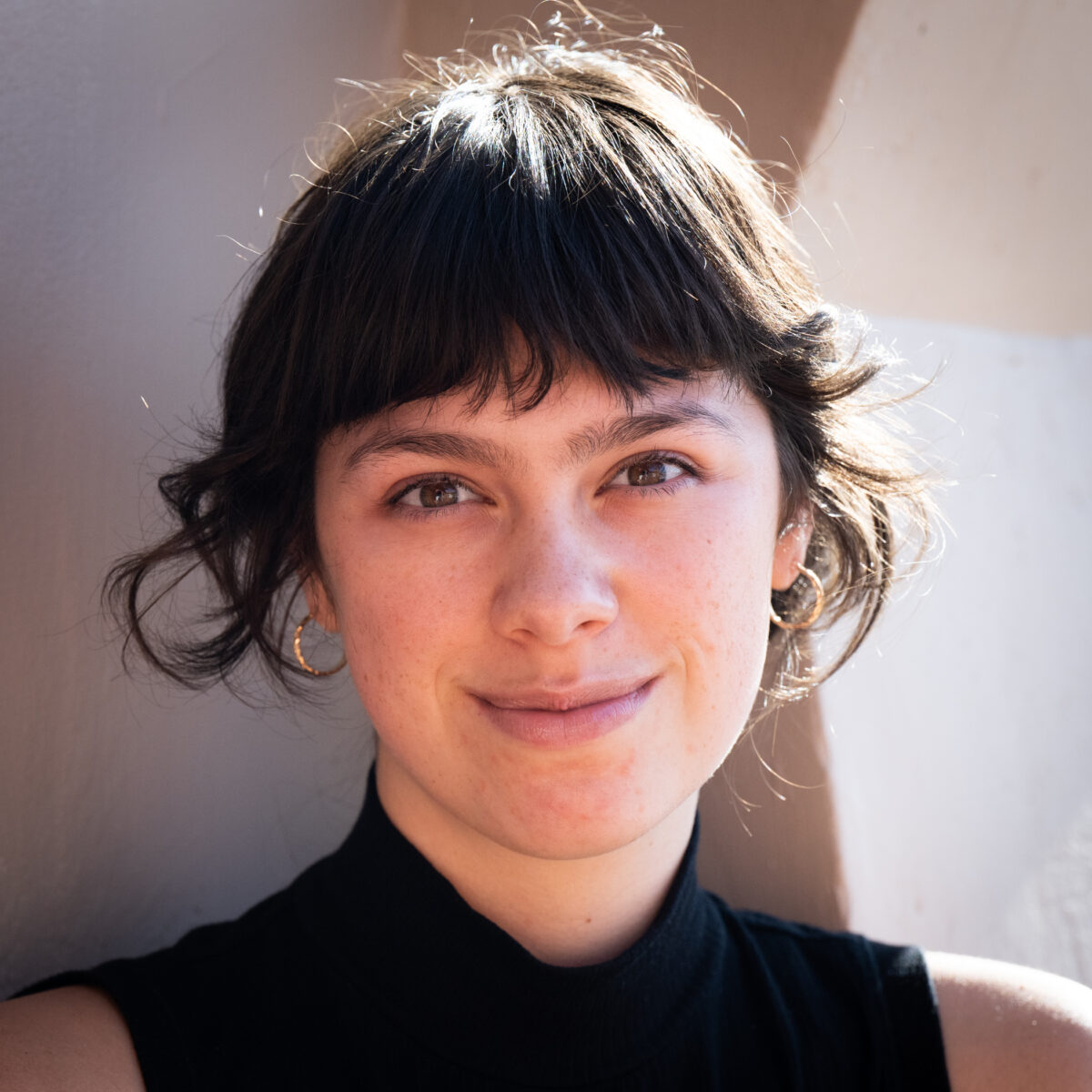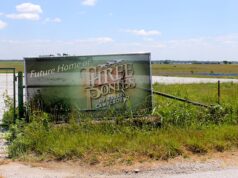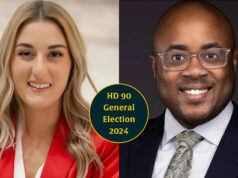

Thunder fans were spoiled from the start.
The team made its first appearance in the NBA playoffs during their second year in Oklahoma City and returned to the postseason in nine of the next 10 seasons. Now, the Thunder are in their longest postseason drought since the team relocated — two seasons without a playoff appearance — and fans are in uncharted territory as they witness their first full rebuild.
This summer, the Thunder had a promising performance in the NBA Summer League, and city officials started the conversation about a new arena. Then, Chet Holmgren, whom the team took second overall in this year’s draft, suffered a season-ending Lisfranc injury to his foot.
As the Thunder prepare for their season opener next month, NonDoc spoke to Jon Hamm, a prominent Thunder commentator, about the state of the franchise. Hamm is an information technology systems engineer by day, but he is also one of the Thunder beat’s most prolific content creators. The Oklahoman has described him as an expert on the league’s collective bargaining agreement, and he has written about the team for publications like Bleacher Report. He is one of the regular contributors to OKC Dream Team, a podcast devoted to the Thunder.
In the following Q & A, Hamm discusses the future of the franchise, but he also talks about what fans can expect in the short term as the Thunder’s 2022-2023 (pre)season begins with a game at 8 p.m. tonight against the Denver Nuggets.
The following conversation has been edited lightly for clarity and style.
Tell us a little about yourself. Where did you grow up, where did you go to school and how did a systems engineer end up on an NBA beat?
I grew up in the small town of Wetumka and graduated high school from there in 1994. I moved to Oklahoma City in 1997 because, almost on a whim, my older brother said I should consider applying at the old AOL call center that was in Shepherd Mall. I didn’t know it at the time, but that was the beginning of my career in information technology. I’ve spent the past 25 years growing and developing from a help desk technician to a network and systems engineer and more.
Just like I sort of tripped and fell into an IT career, I pretty much did the same when it came to becoming a voice in the NBA ecosphere. I’ve been an NBA fan since the mid-80s. I read every magazine I could afford to buy and studied every NBA guide and register I could get my hands on.
Eventually, I made the acquaintance of Larry Coon, who would become the author of cbafaq.com, a site that explains all of the intricate details of the NBA’s collective bargaining agreement. I was fortunate to be a participant in his very first document, which covered the 1999 agreement. I’ve followed the league from that vantage point ever since.
Twitter came along, and that helped me get noticed. Over time, I connected with local beat writers, columnists, bloggers, podcasters and radio hosts. I had some writings published, which led to podcast appearances, which led to radio work. I just kept at it and worked my way to this spot.
How do you balance your day job with producing Thunder content?
It was a grind for a few years. A typical game day would start at 6 a.m. for me and end sometime around midnight, but it’s what was needed to take advantage of a rare opportunity. I was fortunate to have the support of my employer to help make it work, but it made for many super long days.
The Thunder side of my world has scaled back over the past couple of years, though. Freelance budgets dried up during the pandemic. At the same time, the Thunder went into a full rebuild and fell off the national radar. I miss the radio gigs and the writing opportunities, but I am still part of a crew that produces the OKC Dream Team and Thunder After Dark podcasts.
Some fans have become apathetic toward the team as it develops. With Chet Holmgren — a player most fans were looking forward to watching — out for the season, what do you think fans have to look forward to this year?
Losing Holmgren for the season was a huge bummer, but all is not lost. Shai Gilgeous-Alexander remains the top attraction, a dynamic scorer with All-Star potential who still hasn’t reached his ceiling. SGA recently suffered a medial collateral ligament injury in his left knee and could miss some time to open the season, but the team doesn’t seem to be too alarmed. It’s a shame that Josh Giddey wasn’t allowed to play with a cane and a top hat, because he was a showman last season. He’ll deliver a few unexpected highlight moments every game. Tre Mann, the Thunder’s other 2021 first-round pick, has explosive scoring potential.
How many wins will that amount to? Probably not as many as the average fan would like. But if fans can get past needing victories to justify their attention, I’ve found it fun to see the birth and development of the squad — sort of like following a band before they get their first major record deal.
For fans who haven’t been following the team as closely over the past few years, what are the biggest storylines they should be clued into this season?
I sometimes have to remind people that the Thunder just finished the second season of its rebuild. When you consider that most successful rebuilds need at least four years to solidify, that means another season of development barring a sudden change in organizational thinking.
One thing to watch is the dynamic between Gilgeous-Alexander and Giddey. Can Shai thrive with Giddey quarterbacking the halfcourt offense? How can Giddey contribute when Shai is the offensive creator? We are far from knowing if they can click together, but this season will tell us a lot.
As the front office begins to lock up its young talent, do you think they’ll be more willing to break the luxury tax threshold after what happened with James Harden in 2012?
I could probably pivot right now into 5,000 words about that flashpoint in Thunder history, but I will rein myself in as much as I can. It was a controversial trade that was immediately labeled as financially-driven by a lot of observers, myself included. But there was much more that led to this decision than many realize.
The trade had much more to do with the role available to Harden in OKC — he was third in line for touches behind Kevin Durant and Russell Westbrook and always would be — than the money. A rule change in the 2011 collective bargaining agreement meant the Thunder could only offer Westbrook or Harden a five-year extension. Westbrook was up first for an extension and got that deal, meaning the most OKC could offer Harden was a four-year extension the following year worth a little over $60 million. He was able to get a five-year extension worth over $80 million once he was traded to the Rockets. And he thrived once he didn’t have to share the spotlight.
One source told me that the luxury tax was a consideration but “wasn’t driving the bus” on the decision to trade him. Another source heavily implied that Harden wouldn’t have accepted the Thunder’s offer even if they had put forth a maximum offer. Where is the truth? Probably still somewhere out there. I can’t wait to see what else we find out in another 10 years.
Ultimately, it was a nice problem to have back then, and it would be a nice problem to have again.
What sort of changes do you expect from the next Collective Bargaining Agreement, and how do you expect general manager Sam Presti and the Thunder to navigate them?
It’s been hard to get a read on what will actually change. The general consensus is that the league is in a great place financially. The money is flowing, and the current salary cap rules more or less work, so there may just be some refinements made. Perhaps there will be changes in how luxury tax is calculated, loosening rules regarding veteran extensions, and better safeguards in advance of a potential cap spike in 2025. But right now, it doesn’t feel like the owners or players would risk a shutdown to fight over massive changes.
The big thing for the Thunder is knowing for certain what the rules will be before they are faced with making several long-term decisions. I think they would very much appreciate not having a giant salary cap curveball thrown at them mid-rebuild this time around.
Presti has become pretty infamous for all of the draft picks he has amassed. Are the Thunder going to perpetually face a roster crunch after every draft for the next few years, or do you think he will start flipping picks for current players soon?
The Thunder, and other teams in non-destination markets, will likely always prioritize the draft. Rookie-scale contracts are very valuable to teams when the player performs well. Teams also get several advantages to keep drafted players long-term.
Having said that, there just won’t be enough roster spots for all of the current good players as well as all of the future first-round picks they have amassed. In the past week, we have seen OKC part ways with prospects that showed some promise but were nudged aside by an incoming draft class. The cycling of players like that will ideally lead to overall team improvement and also keep better players on hand in case the Thunder needs to make a trade at some point with those players and/or picks.
The nice thing is that they can put multiple first-round picks into a trade and not leave the cupboard completely bare. Expect them to be opportunistic if the right opportunity develops, though it may not always be about cashing in picks for current players. They could choose to continue packaging multiple picks to improve their draft position and target certain players, as they have done in the previous three drafts.
During your time covering the Thunder, what has been your single favorite moment?
Not to end this conversation on a down note, but I’ll go with when the Thunder took a 3-1 lead over the Warriors in the 2016 Western Conference Finals. OKC had just pulverized a 73-win team in back-to-back home games. The Warriors were overwhelmed. A trip to the NBA Finals felt inevitable, and for a moment it felt like Durant’s future would remain in Oklahoma City.
Unfortunately, there were some post-credit scenes to that happy ending that upended things. But the buzz and excitement around the city for the 48 hours following that game was really cool.





















